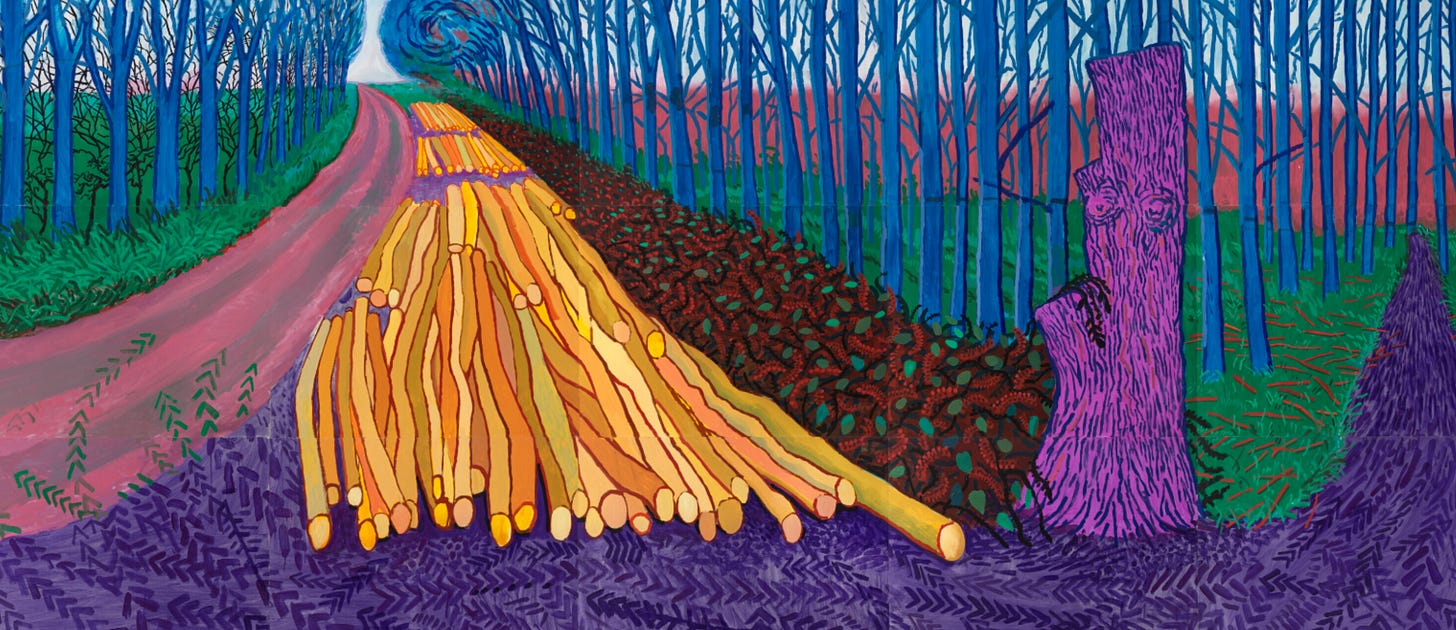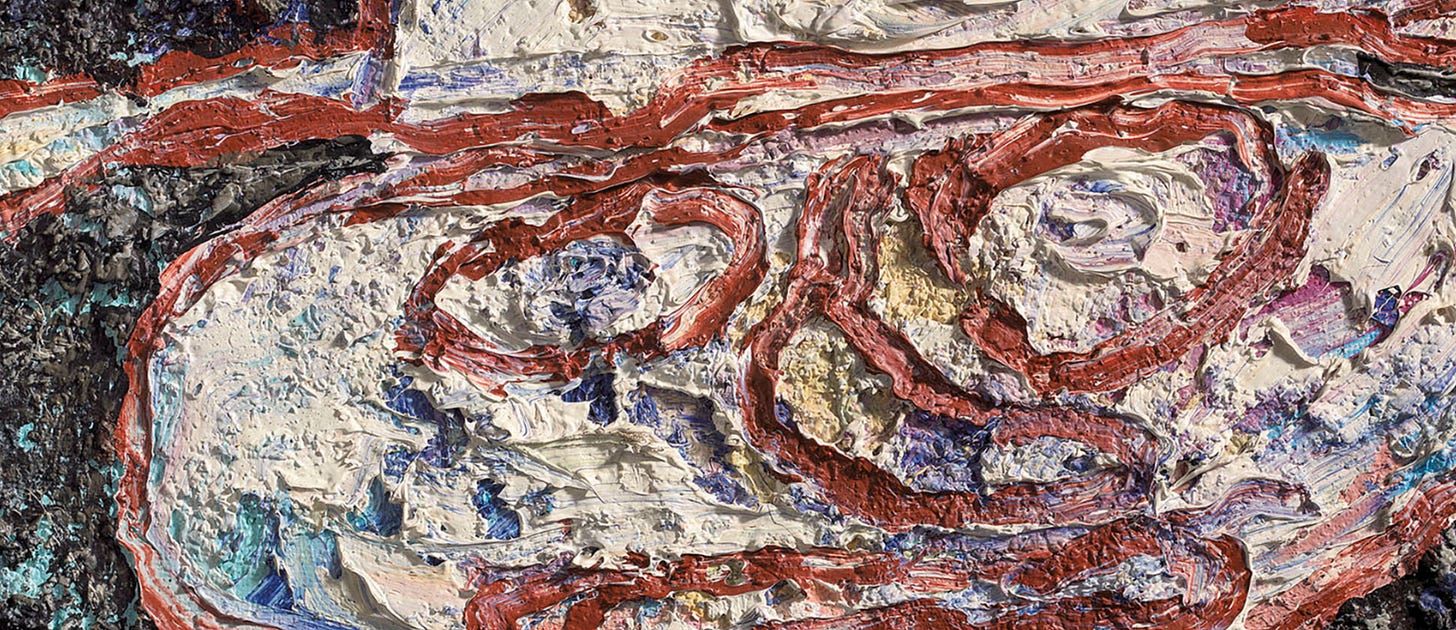Beyond the obvious: the art of seeing what others miss
Why shallow observation isn’t enough for designers
"There is beauty in everything, even a bag of rubbish. But you really have to look."
The English painter David Hockney’s words capture the essence of creativity: not just seeing, but looking with intent—finding meaning where others see nothing.
The advantage of seeing deeply
Creatives have an inherent advantage.
Even a basic art education teaches valuable skills. Drawing from life, whether a still life or a photograph, forces you to slow down and observe, not just glance. You see how light moves, how forms relate, and how space is constructed.
Drawing is about relationships—how parts connect to form a whole. And when you focus on those relationships, you begin to see more than you ever did before.
But in a world full of distractions, true observation has become rare.

Reclaiming focus in a distracted world
Most people move through life skimming the surface, noticing just enough to get by. But for designers, shallow observation isn’t enough.
Our value comes from looking deeper—questioning assumptions, noticing what others overlook, and seeing beyond the obvious. Creativity isn’t just about noting what exists; it’s about imagining what could be.
Three forces sharpen—and distort—our ability to see: patterns, preconceptions, and attachment.
Seeing beyond familiar patterns
Our brains rely on patterns to make sense of the world.
While our eyes take in a flood of information, our brains sort, filter, and organize it. Patterns help us fill in gaps, allowing us to process what we see quickly and efficiently.
For artists and designers, patterns are both a tool and a challenge—they help us make sense of what we see but also encourage habitual ways of looking. Creativity comes from breaking out of habits to discover nuances others miss.
Claude Monet understood this and deliberately worked to move beyond it. How?
He painted the same haystacks, the same cathedral, the same water lilies—again and again. To an untrained eye, it might seem repetitive. But Monet wasn’t simply repeating himself; he was training his eye to see differently. By painting the same subjects under changing light, color, and atmosphere, he broke free from habitual seeing and uncovered what was truly in front of him.
Looking closely at Monet’s work reminds us that what we think we see is often just a mental shortcut—a quick interpretation rather than reality.
Reality demands a closer look.
Consider how the patterns you recognize might be keeping you from noticing the subtle variations and details right in front of you.

Breaking through preconceptions.
We don’t see things as they are—we see them as we expect them to be.
Our perception is shaped by more than just our eyes. Culture, history, and prevailing trends influence what we notice, what we value, and what we dismiss.
These preconceptions offer a foundation, but the most innovative creatives learn to see beyond inherited ideas, discovering new possibilities in the unfamiliar.
Tradition has long dictated how art is seen and made. In the Renaissance, perspective was prized. Baroque artists dramatized light and shadow. 19th-century academics upheld polish, precision, and historical grandeur as the highest ideals.
Then came Jean Dubuffet.
Where others saw refinement, he saw restriction. Where others pursued beauty, he sought rawness. He rejected the traditional emphasis on elegance and precision, instead turning to childlike drawings, crude textures, and unpolished materials.
Dubuffet believed that "real" art wasn’t found in museums but in the everyday world—in graffiti, in outsider art, in the marks of people who had never been taught what “good” art was supposed to look like.
By breaking through his own cultural conditioning, he redefined what art could be.
For designers and artists, the challenge is the same.
If we assume trees are brown and leaves are green, we miss the deep purples, electric blues, and burnt oranges actually present. If we believe ideas must look polished to be valuable, we overlook the power of the raw and the imperfect.
When we let go of our preconceived ideas of how things "should" look, we start to see things as they truly are.
Innovation often starts here.

The hardest part: attachment
Letting go of good ideas is hard. We can’t help but get attached to what we’ve created.
Once an idea takes shape, it feels familiar. The more we refine it, the more convincing it becomes. Attachment seems to give our solutions weight, making them feel inevitable.
However, innovative creatives know when to let go and pivot.
Picasso understood this well. He once said, "Every act of creation is first an act of destruction."
He had no hesitation about painting over, erasing, or transforming his work—even when it meant undoing something beautiful. His process wasn’t about preserving what was good but about pushing further to find what was better.
The same applies to design.
Designers aren’t just valued for their technical skill but for their ability to see past assumptions and reframe problems in new ways. But that only happens if we’re willing to let go of the obvious.
Creativity demands fluidity, openness, and the courage to start over.

The art of truly looking
Seeing deeply is not passive—it’s an ongoing discipline.
It’s not about finding one perfect perspective, but about continually expanding what we notice.
Patterns guide us, but they can also limit us. Preconceptions shape our vision, but they can also narrow it. Letting go of ideas brings clarity, but it can also be uncomfortable.
Hockney put it best:
"Looking is hard work. You are always seeing more."
When we train ourselves to see beyond the obvious—to notice beauty even in the discarded and overlooked—we unlock creative possibilities that others miss.
True observation demands effort, but it’s transformative.








